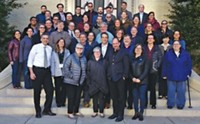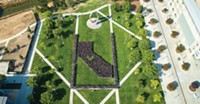Advertisement
Grab your lab coat. Let's get started
Welcome!
Welcome!
Create an account below to get 6 C&EN articles per month, receive newsletters and more - all free.
It seems this is your first time logging in online. Please enter the following information to continue.
As an ACS member you automatically get access to this site. All we need is few more details to create your reading experience.
Not you? Sign in with a different account.
Not you? Sign in with a different account.
ERROR 1
ERROR 1
ERROR 2
ERROR 2
ERROR 2
ERROR 2
ERROR 2
Password and Confirm password must match.
If you have an ACS member number, please enter it here so we can link this account to your membership. (optional)
ERROR 2
ACS values your privacy. By submitting your information, you are gaining access to C&EN and subscribing to our weekly newsletter. We use the information you provide to make your reading experience better, and we will never sell your data to third party members.
Careers
Getting The Message Out
November 12, 2007
| A version of this story appeared in
Volume 85, Issue 46
We recently had a wonderful experience that I should like to share with faculty members at schools that are geographically isolated or that have limited financial resources. Texas Tech University, in Lubbock, is approximately 300 miles from other major metropolitan areas. It is cost-prohibitive for many of our faculty to go individually to the National Science Foundation and other federal agencies during the year, and it is cost- and time-ineffective and perhaps inappropriate for NSF program officers to visit individual universities such as ours.
In venting my frustrations to Janice Hicks of the NSF Chemistry Division during the recent ACS meeting in Chicago, she asked if we had teleconference facilities. I said yes, and what followed was the development of a teleconference among program offers in the Chemistry Division and members of the chemistry and biochemistry faculty at Texas Tech. It was a first for both NSF chemistry and for us, and it was an unqualified success.
During the three-hour teleconference, members of our faculty were able to meet with about a dozen program officers in a number of disciplinary research areas. Division Director Luis Echegoyen and Executive Officer Janice Hicks were among the officers. They told us about a variety of programs of which we were unaware. They were able to provide feedback to faculty about appropriate programs in their areas, how NSF works, and so on.
The information they provided has allowed our faculty to approach grant writing more intelligently. At least two faculty members have received NSF grants in programs for which they otherwise would not have applied because they became aware of these opportunities during the teleconference. It is a win-win situation for both NSF and for schools with limited resources, and I would encourage universities that have not been visited recently to contact the NSF Chemistry Division to explore teleconferencing with them.
Dominick Casadonte Jr.
Lubbock, Texas




Join the conversation
Contact the reporter
Submit a Letter to the Editor for publication
Engage with us on Twitter